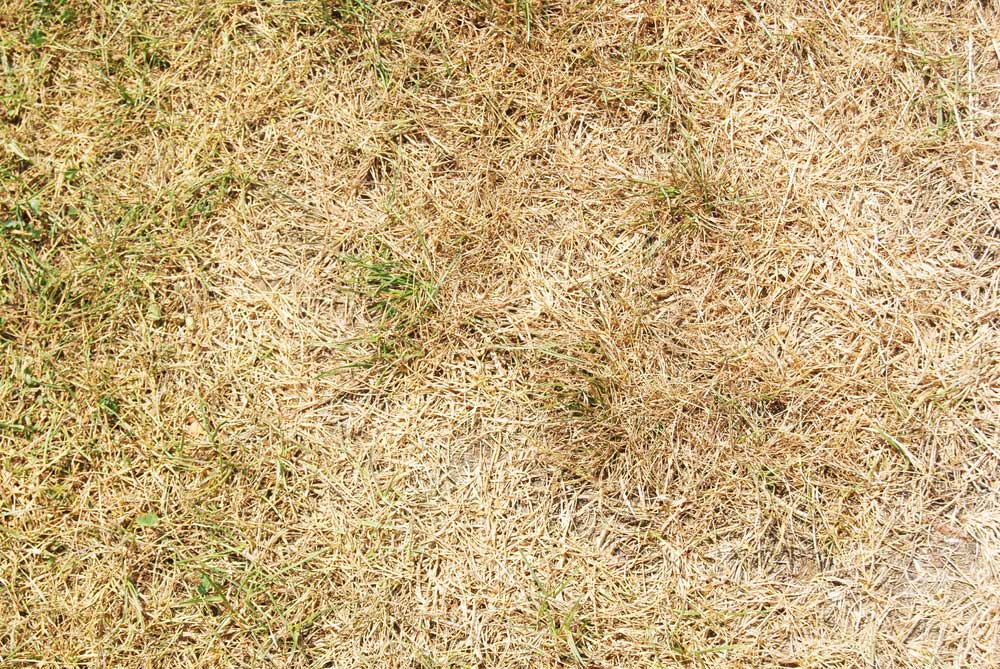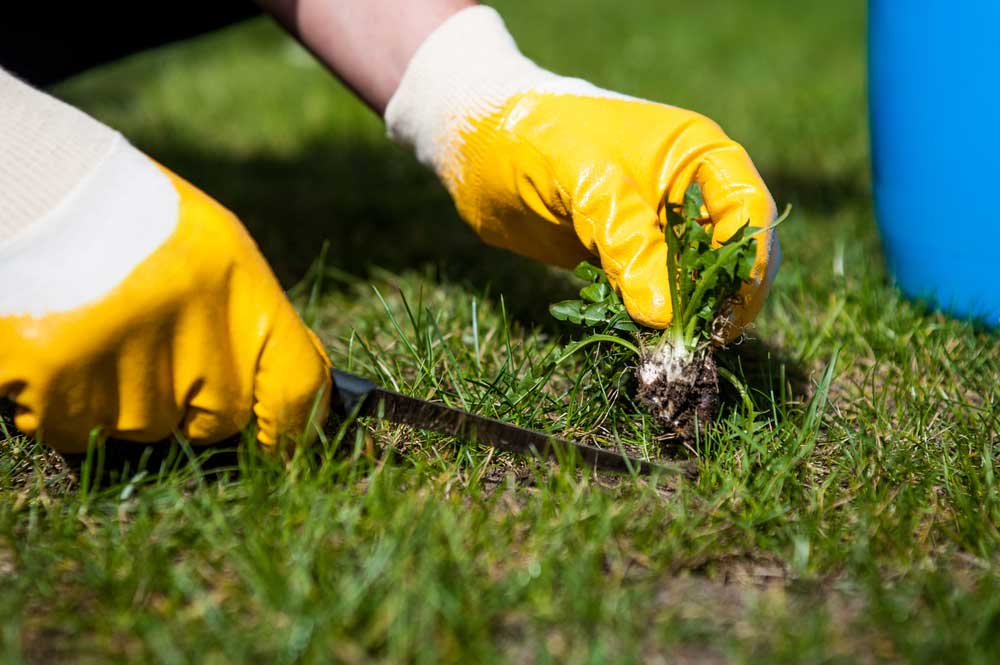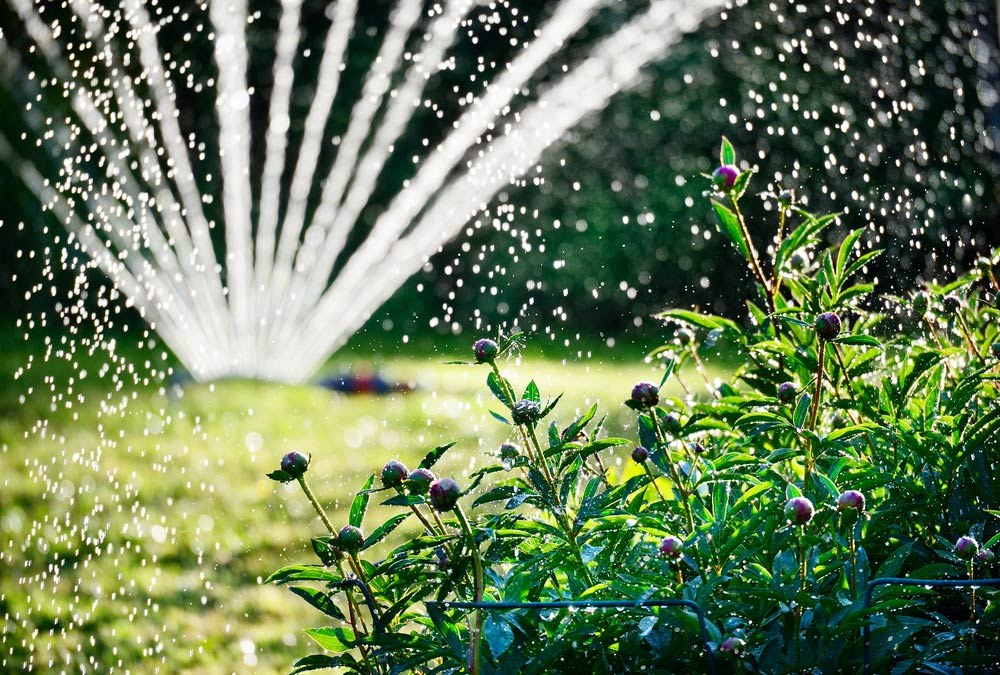Hell hath no fury like a summer heatwave. A lot of lawns this summer have taken a scorching beating, turning them from a vibrant green to a yellowy brown. Below are seven tips on how to breathe new life into your garden lawn.
This post was originally published in Tom’s Guide.
If your once beautiful, green lawn has slowly turned yellow or brown this summer, you’ll need to know how to revive a dried lawn. Whether it’s from the intense heat, or you’ve left it to go on vacation, there’s nothing worse than coming home to a dried and unappealing lawn. Despite our best efforts on how to make your grass greener, grass can often begin to dry or recede in extreme weather conditions. And if it doesn’t have the suitable growing conditions, it will eventually die over time.
While it may seem like the end of the road for your precious lawn, don’t despair. There are ways to revive your dried lawn and make it green again. In fact, it’s not as challenging as it seems, and just involves some extra care and planning. So, if you want to bring your lacklustre grass back to life, here’s 7 ways to revive a dried lawn.
Once you revive your dried lawn, be sure not to make any of these seven common lawn care mistakes.
How to revive a dried gardern lawn
Before you tackle your dried lawn, you’ll need to know whether your grass is dead or dormant. Simply tug at a piece of grass, and if it easily comes away at a pull, that means it’s dead. Other signs to lookout for include distinct patterns or areas or circles of brown grass. On the other hand, dormant grass is essentially still alive, and can spring back to life after about 10-14 days by following the steps below.
1. Dethatch your lawn
The first step is to dethatch the law. This involves raking over the lawn to allow air or moisture to penetrate the grass better. Essentially, thatch is a layer of decomposing plant materials, such as dead leaves and trees, that builds up on the surface of the soil. If it gets thicker than ½ inch, this can prevent your lawn from getting enough air, water and nutrients. It also prevents healthy root development and can make it prone to insect and disease issues.
2. Aerate the soil
When the soil is too dense or the grass is too thick, this often prevents air from penetrating, which can eventually kill the grass. Aerating your lawn helps prevent this, allowing air, water and nutrients reach the roots. To aerate your lawn, punch holes using a fork to about five or six inches in depth. This way you’ll help your lawn receive all the nutrients it needs to thrive.
3. Kill weeds and dandelions
Weeds can spring up quickly, feeding on water or any moisture available in the ground. When you have weeds growing alongside grass, this creates a battle of survival, meaning there is less water for grass. Remove weeds by hand-pulling them out by the root or by using a tool like this Walensee Weed Puller ($36, Amazon(opens in new tab)). Similarly, knowing how to get rid of dandelions also helps keep more moisture and nutrients for the grass.
4. Fertilize it
Garden lawns need a consistent supply of nitrogen, phosphorus, and potassium to help them develop and stay healthy. Depending on your soil type (clay or sandy), there are suitable fertilisers in granular or liquid forms. In addition, you can naturally fertilize using compost or grass clippings, both of which double up as a great defence against weeds.
5. Plant new grass seeds or lay sod
If your dried garden lawn is receding or patchy, you’ll need to know how to plant grass seeds and get a greener yard. It’s always best to choose a high-quality grass seed and spread it evenly over your prepared lawn. Once the seed is completely laid down, cover it with a thin layer of soil. Alternatively, if you don’t want to wait too long for your grass to grow, learn how to lay sod for an instant upgrade. Sod is grass that is already growing and comes in rolls or squares that you lay over your soil. If you are only filling in dead patches, you can simply use sod to plug wherever you need new grass.
6. Water frequently
Dried garden lawns are a sure sign of dehydration, so you’ll need to soak the lawn thoroughly. Bear in mind that you need to water at the right times. Experts advise the best time to water your lawn is early morning or late evening when it’s cooler. Watering during hot periods of the day will evaporate most of the moisture, so it won’t be absorbed into the lawn. It’s best to use a sprinkler system to ensure the lawn gets a thorough soak. There are many affordable sprinkler systems available, like this GOLDFLOWER Garden Sprinkler.
7. Top dress the lawn
Topdressing is a layer of compost or other nutrient-rich soil covering the top of your lawn. This will give the dried lawn a nutrient boost and will improve the structure of the soil at root level, again helping absorbency. With the help of aeration and a better water flow, the lawn can absorb the nutrients naturally through decomposition, helping the grass grow thicker. In addition, you can top dress the lawn with sands or other mixtures, depending on your soil type.
Other tips to keep your garden lawn green
- Don’t cut your grass too short. Experts advise cutting grass down to 2 ½ to 3 inches, which is a healthy height
- Experts also suggest mowing your lawn at least once a week in summer and once every two weeks for the remaining seasons
- Make sure your lawn has good drainage to avoid it getting waterlogged
- Avoid planting grass seeds in shady areas. Grasses require sunlight to stay healthy and thrive. If you’re planting seeds in shade, they may not survive
Save yourself the stress of looking after your garden and get us to do it. Never worry about your garden again with our garden maintenance package.




